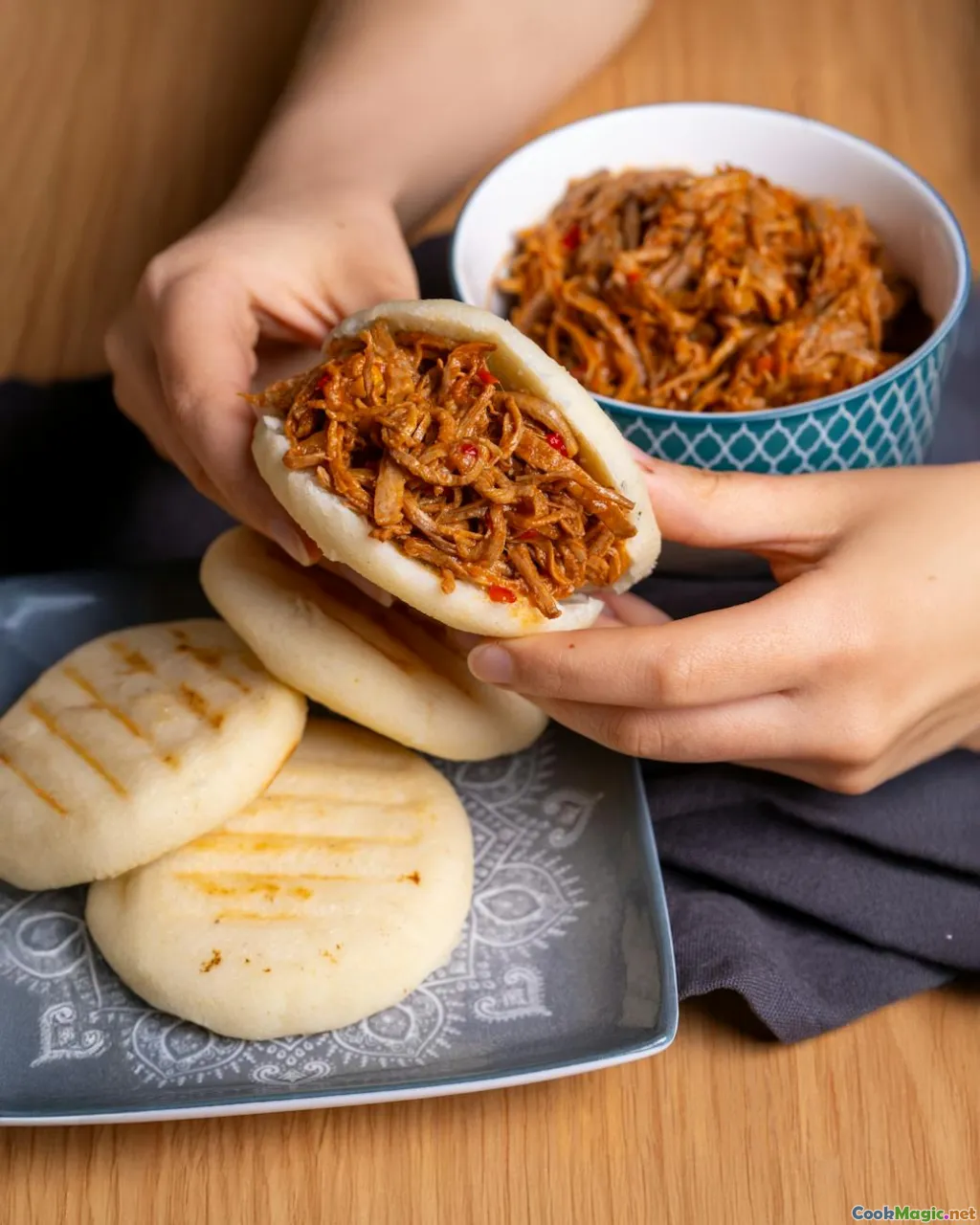How to Prepare Venezuelan Pabellon Criollo Correctly
8 min read Discover the authentic way to prepare Pabellon Criollo, Venezuela’s beloved national dish, blending savory beef, rice, beans, and plantains into a symphony of flavors. May 08, 2025 18:00
How to Prepare Venezuelan Pabellon Criollo Correctly
Imagine walking through the vibrant streets of Caracas, where the air is thick with the aroma of sizzling meats, ripe plantains, and fragrant rice. Pabellon Criollo isn’t just a dish; it's a symphony of Venezuela’s history, culture, and soul—all wrapped up in a plate that tells stories of indigenous roots, Spanish influence, and African heritage.
The Heartbeat of Venezuela: An Introduction to Pabellon Criollo
Pabellon Criollo, often heralded as Venezuela’s national dish, is a harmonious blend of shredded beef, steamy white rice, black beans, and sweet fried plantains. Each component holds cultural significance and reflects the diverse tapestry of Venezuelan identity.
This dish is more than the sum of its parts; it’s a celebration of resilience, community, and the vibrant spirit of Latin America. Every bite evokes memories of family gatherings, street fairs, and the warm embrace of Venezuelan hospitality.
A Cultural and Historical Perspective
Historically, Pabellon Criollo emerged from the mestizo culture, integrating indigenous ingredients with Spanish culinary techniques. The name "Pabellon" (meaning "pavilion" or "flag") symbolizes the national pride encapsulated in the dish, with its colorful and contrasting elements representing Venezuela’s diverse landscapes and peoples.
In rural communities, this dish is often prepared with locally sourced ingredients—beef from small farms, ripe plantains from nearby orchards, and beans nurtured in community plots—making it a true reflection of Venezuelan life.
The Emotional and Social Significance
Sharing Pabellon Criollo is an act of unity and pride. It’s a dish that brings families together after a day’s work, a centerpiece during festivals, and a comforting reminder of home for Venezuelans abroad. The aroma alone has the power to transport someone back to childhood or to the lively streets of Caracas.
For many Venezuelans, mastering the art of preparing Pabellon Criollo is a rite of passage—an expression of love, tradition, and culinary mastery.
Ingredients and Their Cultural Significance
- Shredded Beef (Carne Mechada): Traditionally slow-cooked with tomatoes, bell peppers, onions, and a dash of cumin, this beef is tender, flavorful, and rich in history. It’s a reflection of the Spanish influence, adapted with local spices.
- White Rice: The staple that forms the foundation of the dish, symbolizing sustenance and simplicity.
- Black Beans: Often cooked with garlic and onion, these beans add earthiness and depth, representing indigenous ingredients.
- Fried Plantains (Tostones or Maduros): Their sweet or savory flavor adds balance; they are a staple in Venezuelan households.
Preparing Pabellon Criollo: Step-by-Step Guide
1. Preparing the Carne Mechada (Shredded Beef)
Ingredients:
- 2 lbs beef chuck roast
- 1 onion, chopped
- 1 bell pepper, chopped
- 2 cloves garlic, minced
- 2 tomatoes, chopped
- 1 teaspoon cumin
- Salt and pepper to taste
- 2 tablespoons vegetable oil
**Method:**1.Sear the Beef: Heat oil in a large pot over medium-high heat. Sear the beef on all sides until browned. 2. Add Aromatics: Remove beef temporarily. In the same pot, sauté onions, peppers, and garlic until fragrant. 3. Simmer: Return beef to the pot, add tomatoes, cumin, salt, and pepper. Cover with water or beef broth. 4. Cook Low and Slow: Reduce heat, cover, and simmer for 2-3 hours until the beef is tender and easily shredded. 5. Shred the Beef: Use two forks to pull apart the beef into thin strands.
2. Cooking the White Rice
- Rinse 1 cup of long-grain rice until water runs clear.
- Use 2 cups of water, a pinch of salt, and bring to a boil.
- Reduce heat to low, cover, and simmer for 18-20 minutes until fluffy.
3. Preparing the Black Beans
- Rinse 1 cup black beans.
- Sauté 1 chopped onion and 2 minced garlic cloves in a pot.
- Add beans and 3 cups water or broth.
- Simmer for 1 hour or until tender.
- Season with salt, cumin, and a splash of vinegar if desired.
4. Fried Plantains
- Peel ripe plantains (preferably yellow with black spots).
- Slice diagonally.
- Heat oil in a frying pan.
- For sweet plantains (maduros), fry until golden.
- For tostones, flatten slices and fry twice for extra crunch.
Assembling the Dish
- Plate a generous scoop of fluffy white rice.
- Top with a mound of shredded carne mechada.
- Add a side of black beans.
- Garnish with crispy fried plantains.
- Optional: serve with a slice of fresh lime or a sprinkle of fresh herbs.
Tips for Authenticity and Perfection
- Slow Cooking: Patience is key for tender, flavorful beef.
- Balance Flavors: Adjust seasoning with cumin and salt to taste.
- Use Fresh Ingredients: Fresh tomatoes and ripe plantains elevate the dish.
- Presentation Matters: Colorful plates with contrasting elements reflect Venezuelan vibrancy.
Personal Reflections and Final Thoughts
Having prepared and tasted countless variations of Pabellon Criollo, I can attest to its power to evoke nostalgia and pride. Each component, from the tender beef to the sweet plantains, contributes to a harmony that’s both comforting and celebratory.
This dish is more than culinary tradition; it’s a window into Venezuela’s soul—a testament to resilience, community, and joy. Whether you’re cooking for family or sharing a meal with friends, mastering Pabellon Criollo allows you to bring a piece of Venezuelan spirit into your home.
So, gather your ingredients, embrace the process, and let your kitchen be filled with the irresistible aroma of true Venezuelan flavor. ¡Buen provecho!









